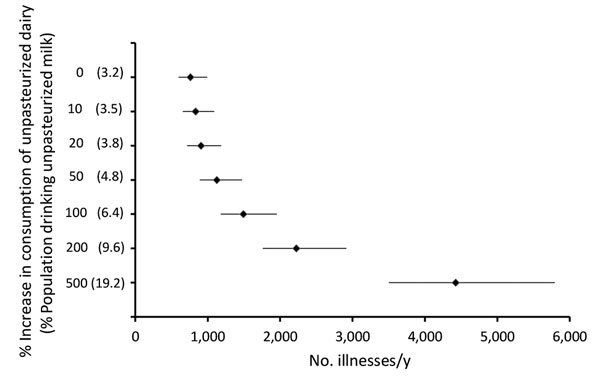Volume 23, Number 6—June 2017
Research
Outbreak-Related Disease Burden Associated with Consumption of Unpasteurized Cow’s Milk and Cheese, United States, 2009–2014
Figure 4

Figure 4. Number of dairy-related outbreak illnesses predicted per year in the United States if unpasteurized cow’s milk and cheese consumption increases 0%, 10%, 20%, 50%, 100%, 200%, and 500%. Numbers in parentheses indicate percentage of total population consuming unpasteurized cow’s milk. The illnesses graphed are those from outbreaks associated with cow’s milk or cheese contaminated with Shiga toxin–producing Escherichia coli, Salmonella spp., Listeria monocytogenes, and Campylobacter spp. Markers indicate means; bars indicate 95% prediction intervals. The consumption estimates were based on the year 2015, and a 0% increase corresponds to the current proportion of the US population consuming unpasteurized dairy products.
Page created: May 16, 2017
Page updated: May 16, 2017
Page reviewed: May 16, 2017
The conclusions, findings, and opinions expressed by authors contributing to this journal do not necessarily reflect the official position of the U.S. Department of Health and Human Services, the Public Health Service, the Centers for Disease Control and Prevention, or the authors' affiliated institutions. Use of trade names is for identification only and does not imply endorsement by any of the groups named above.